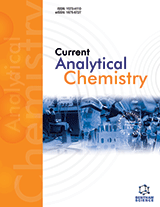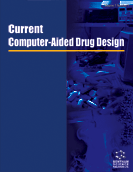摘要
背景:人类过度暴露于太阳紫外线辐射(uvr)仍然是一个主要的公共卫生问题,皮肤癌发病率逐年上升。主要的保护措施是使用合成的紫外线滤光片制成防晒霜,但是越来越多的人担心这些化学物质会对脆弱的海洋生态系统造成损害。另一种选择是使用生物相容性真菌类氨基酸(MAA),这种氨基酸自然存在于各种海洋物种中。它们在自然界中的作用主要被认为是光防护。然而,他们在人类光防护方面的潜力在很大程度上还未被研究。 目的:综述甲基丙烯酸甲酯(MAA)在自然界中的作用,并评价其作为天然防晒剂在人体皮肤光防护中的应用潜力。 方法:对相关文献进行文献综述。 结论:甲基丙烯酸甲酯(MAA)是一种天然的可光性化合物,对海洋生物具有光防护作用。最初认为MAA是基于其在太阳紫外线光谱中的吸收特性而起到保护作用的,很明显MAA是一种多功能的光保护化合物,起到化学和生物抗氧化剂的作用。这表明MAA可能为人类皮肤光防护提供一种新的环保方法。大多数研究都是在体外进行的,目前的数据强烈表明,MAA作为天然生物相容性防晒剂具有开发潜力,能够抵御各种太阳紫外线辐射对人体健康的不利影响。
关键词: 光防护,支原体类氨基酸,皮肤,天然产物,机制,太阳辐射
Current Medicinal Chemistry
Title:Mycosporine-Like Amino Acids for Skin Photoprotection
Volume: 25 Issue: 40
关键词: 光防护,支原体类氨基酸,皮肤,天然产物,机制,太阳辐射
摘要: Background: Excessive human exposure to solar ultraviolet radiation (UVR) continues to be a major public health concern, with skin cancer rates increasing year on year. The major protective measure is the use of synthetic UVR filters formulated into sunscreens, but there is a growing concern that some of these chemicals cause damage to delicate marine ecosystems. One alternative is the use of biocompatible mycosporine-like amino acids (MAA), which occur naturally in a wide range of marine species. Their role within nature is mainly thought to be photoprotective. However, their potential for human photoprotection is largely understudied.
Objective: To review the role of MAA in nature and assess their potential as natural sunscreens for human skin photoprotection.
Method: A literature review of all relevant papers was conducted.
Conclusion: MAA are natural photostable compounds that are thought to offer photoprotection to marine species. Initially thought of as protective based on their absorption properties in the solar UVR spectrum, it is clear that MAA are multifunctional photoprotective compounds acting as chemical and biological anti-oxidants. This suggests that MAA may offer a novel eco-friendly approach to human skin photoprotection. Most studies have been carried out in vitro and current data strongly suggest that MAA have potential for development as natural biocompatible sunscreens that protect against a diverse range of solar UVR induced adverse effects on human health.
Export Options
About this article
Cite this article as:
Mycosporine-Like Amino Acids for Skin Photoprotection, Current Medicinal Chemistry 2018; 25 (40) . https://dx.doi.org/10.2174/0929867324666170529124237
| DOI https://dx.doi.org/10.2174/0929867324666170529124237 |
Print ISSN 0929-8673 |
| Publisher Name Bentham Science Publisher |
Online ISSN 1875-533X |
 96
96 5
5
- Author Guidelines
- Graphical Abstracts
- Fabricating and Stating False Information
- Research Misconduct
- Post Publication Discussions and Corrections
- Publishing Ethics and Rectitude
- Increase Visibility of Your Article
- Archiving Policies
- Peer Review Workflow
- Order Your Article Before Print
- Promote Your Article
- Manuscript Transfer Facility
- Editorial Policies
- Allegations from Whistleblowers
- Announcements
Related Articles
-
Implication of Heat Shock Protein 90 (HSP90) in Tumor Angiogenesis: A Molecular Target for Anti-Angiogenic Therapy?
Current Cancer Drug Targets Applications of Recombinant Adenovirus-p53 Gene Therapy for Cancers in the Clinic in China
Current Gene Therapy Glycogen Synthase Kinase-3 (GSK-3) Inhibitors as a New Lead for Treating Breast and Ovarian Cancer
Current Drug Targets Imaging Virus-Associated Cancer
Current Pharmaceutical Design Mechanisms to Inhibit Matrix Metalloproteinase Activity: Where are we in the Development of Clinically Relevant Inhibitors?
Recent Patents on Anti-Cancer Drug Discovery Morpholino, siRNA, and S-DNA Compared: Impact of Structure and Mechanism of Action on Off-Target Effects and Sequence Specificity
Current Topics in Medicinal Chemistry Preface
Current Cancer Drug Targets Inhibition of Aurora A Kinase by Alisertib Induces Autophagy and Cell Cycle Arrest and Increases Chemosensitivity in Human Hepatocellular Carcinoma HepG2 Cells
Current Cancer Drug Targets Male Fertility-Implications of Anticancer Treatment and Strategies to Mitigate Gonadotoxicity
Anti-Cancer Agents in Medicinal Chemistry HIV Infection Induces Morphometrical Changes on the Oral (Buccal Mucosa and Tongue) Epithelial Cells
Current HIV Research Cancer Preventive Phytochemicals as Speed Breakers in Inflammatory Signaling Involved in Aberrant COX-2 Expression
Current Cancer Drug Targets Phytometabolites Targeting the Warburg Effect in Cancer Cells: A Mechanistic Review
Current Drug Targets Effects and Role of Multikinase Inhibitors in Thyroid Cancer
Current Pharmaceutical Design Template Dependent Human DNA Polymerases
Current Topics in Medicinal Chemistry Extracellular Vesicles as Innovative Tools for Assessing Adverse Effects of Immunosuppressant Drugs
Current Medicinal Chemistry Drug Resistance in Melanoma: New Perspectives
Current Medicinal Chemistry The Emerging Role of Vascular Endothelial Growth Factor (VEGF) in Vascular Homeostasis: Lessons from Recent Trials with Anti-VEGF Drugs
Current Vascular Pharmacology Paralog Specific Hsp90 Inhibitors – A Brief History and a Bright Future
Current Topics in Medicinal Chemistry Anticancer Lignans - from Discovery to Biotechnology
Mini-Reviews in Medicinal Chemistry Oncogenic LncRNA CASC9 in Cancer Progression
Current Pharmaceutical Design


























